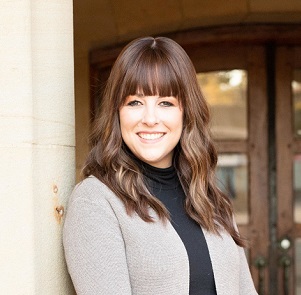Modesty Blogging and Modesty Living

A
slight headache tends to come on when I read articles about Orthodoxy in the mainstream media. I approach these articles with a mix of dread and annoyance. I know what is in store: a veiled criticism of our customs and laws as being repressive, paternalistic, or misogynistic. I’ll feel frustrated in knowing that what we have can’t possibly be grasped, understood, or appreciated in its entirety unless one is part of it; that our culture stands in stark contrast to secular society’s overarching emphasis on individualism and unbridled freedom in virtually all aspects of life. So I planned to simply skim the recent Wall Street Journal piece, “Modesty on Instagram is a Tough Balance,” and expect the expected.
Already in the second paragraph I saw it. “Orthodox women face a host of sartorial challenges thanks to prohibitive rabbinical dress-code guidelines. When in public, they must cover their shoulders and knees at all times. Married women are required to cloak their hair.”
I want to come to the defense of Orthodox women everywhere. Yes, we have rabbinical dress-code guidelines that prohibit too much exposure, but I wouldn’t call them prohibitive. It doesn’t feel prohibitive to be in touch with the deeper meaning of Jewish modesty — and to be able to wear clothes that reflect personal styles within halachic guidelines. And yes, married women do have to cover their hair, but not cloak it — we do not wear burkas, thank you very much. The word selection and turns of phrases in these articles, whether intentional or not, often trigger negative associations and call to mind pernicious stereotypes.
The article focuses on how some Orthodox women have recently taken to the seemingly “kosher” outlet of fashion blogging, posting to social media platforms to express their penchant for fashion and trendiness. These posts often combine the luxe with the religious: prayers alongside pictures images of technically modest runway dresses, photos of hands kneading challah with wrists flashing diamond-encrusted Cartier watches, and shots of handbags and shoes that, according to the article, “likely cost more than some of [blog] followers’ monthly rent.”
But in analyzing this trend, our Wall Street Journal article takes a surprising turn. It argues that “although the [Orthodox] bloggers ostensibly try to advance principles of modesty, it isn’t always clear whether their material is consistent with the spirit of Jewish law,” and that “the entire emphasis seems to be on the exterior without considering what else modesty means.” It continues:
From a traditional Jewish perspective, the notion of modesty extends to both sexes, and far beyond the technicalities of skin exposure. Micah the prophet established the principle that G-d requires of mankind to hatznea lechet, or walk humbly before the L-rd. Moses is lauded in biblical texts as the humblest man on earth.
The rabbinical authority quoted next could not have been better selected: Rabbi Efrem Goldberg of Boca Raton Synagogue (and a Mishpacha magazine guest columnist). Rabbi Goldberg explains that there is a difference between being attracting and attractive, and that it is problematic to follow the letter of the law in clothing lengths without adhering to the spirit of the law regarding modesty in dress. Essential, Torah-true concepts that have now seen the light of day on the pages of a secular newspaper. So rather than criticizing our laws, the Wall Street Journal perhaps gives us an opportunity to ponder how we follow our laws, whether our meticulous observance is having the intended spiritual effects.
The final paragraph went far beyond what I thought possible for a mainstream media treatment of Orthodoxy. An unlikely mix of education and mussar, it reminds us of our essential values and provides an opportunity for reflection, whether we navigate social media or not:
Halakha, Hebrew for Jewish law, directly translates as “walking.” The name serves as a reminder that Judaism isn’t merely a legal code but an all-encompassing lifestyle. While Judaism doesn’t mandate austerity or self-abnegation, its focus — at least according to the rabbis — ultimately is on the depth of the soul. If Halakha is to be met, modesty blogging might require more soul-searching and fewer brand names.
Blessed with advanced technology and growing resources, Orthodox Jews are living in unprecedented levels of comfort and convenience. This inevitably drives a consumerist demand for ever-higher standards and price tags.
In tight-knit communities, we often feel the pressure to fit in — not only religiously and socially, but also economically, to meet certain materialistic standards. No longer do only the rich kids wear certain shoes or certain clothes or have certain types of simchahs. In many Orthodox communities, the bar has been raised for everyone. As if the tuition crisis weren’t enough of a demand.
There is no turning back the clock. The candy man no longer distributes Paskesz lollipops, the limited kosher section with heimish brands is passé, and the ads in the local Jewish weekly in desperate need of proper graphic design are long gone. Our kids eat candies that double as toys, our supermarkets look like Zabar’s, and our ads (indeed, our weekly magazines!) are top rate. Everything in our midst is marked with a quality of sophistication.
We embrace progress and recognize that living frum never looked so good, but something may have been lost along the way. As with any advancement, the next generation cannot entirely appreciate the simplicity we have lost.
My parents embraced Orthodoxy in the early ’90s in Atlanta, Georgia. In those days, kosher cookbooks had no pictures. My mother, who had styled treif cookbooks in her job as a set designer, didn’t care. As a professional couple in the advertising industry who socialized only within their socioeconomic stratum, my parents found themselves eating Shabbos meals in rabbis’ homes with folding tables and chairs as the dining room set, white paper plates as china, and children’s parshah projects taped to the wall as artwork. None of this mattered. The “look” — the external — was not what drew them to (or deterred them from) authentic Jewish living. It was, as the Wall Street Journal article so adeptly put it, “the depth of the soul” that they found in the people and families they met.
The Torah, in its learning and living, ignited their neshamos in a way that no fancy lifestyle — whether secular or religious — could.
No doubt, there was something beautiful also about spending Shabbos meals around tables laden with the finest silver and china, and from these families my parents learned the value of spiritually elevating the mundane. But the physical abundance evident in such homes was simply a blessing and not a requirement for a religious life. In fact, it was the financially blessed families who didn’t show it who impressed my parents the most.
Growing up in Atlanta in those days was idyllic. Our rabbis were superstars from the Atlanta Scholars Kollel: erudite, personable, passionate, and idealistic. Our family friends were growth-oriented and spiritually seeking. Our community was unified and diverse.
What I learned growing up in a small community, sheltered from the brand-name obsessions that often characterize big-city life, is that it’s not about what we look like, it’s about who we are. It’s not about what frumkeit appears to be, it’s about what it is.
The world has changed since the ’90s, and so has Atlanta, Georgia. In an age of social media, where we “get likes” for what we are wearing, what we are doing, where we are going, and what we are eating, pressure to keep up appearances is more acute than ever. Perhaps in our striving to be a holy nation, we can return to basics and reflect on what holiness actually means. As Rabbi Moshe Hauer wrote in a recent article, “The State of the Union: Klal Yisroel’s Core Issues”:
“Holiness” is difficult to define precisely, but without question it implies a level of transcendence and detachment from materialism. Sadly, this would not be an apt description of our people at this moment. While we have built our capacity for Torah study, Mitzvos, and acts of kindness, we are simultaneously becoming more and more materialistic. We must reverse this trend, for both our spiritual and financial well-being.
Modesty on social media is a tough balance, but modesty in real life is even tougher. To recognize the challenge and grapple with the struggle, individually and communally, is one of the many callings we have as Orthodox Jews living in the 21st century. Thankfully, we will always have our age-old values to help us navigate new territory.
It’s nice that the Wall Street Journal took a moment to recognize that.
Originally featured in Mishpacha, Issue 707. Alexandra Fleksher is an educator, a published writer on Jewish contemporary issues, and an active member of her Jewish community in Cleveland, Ohio.
Oops! We could not locate your form.






